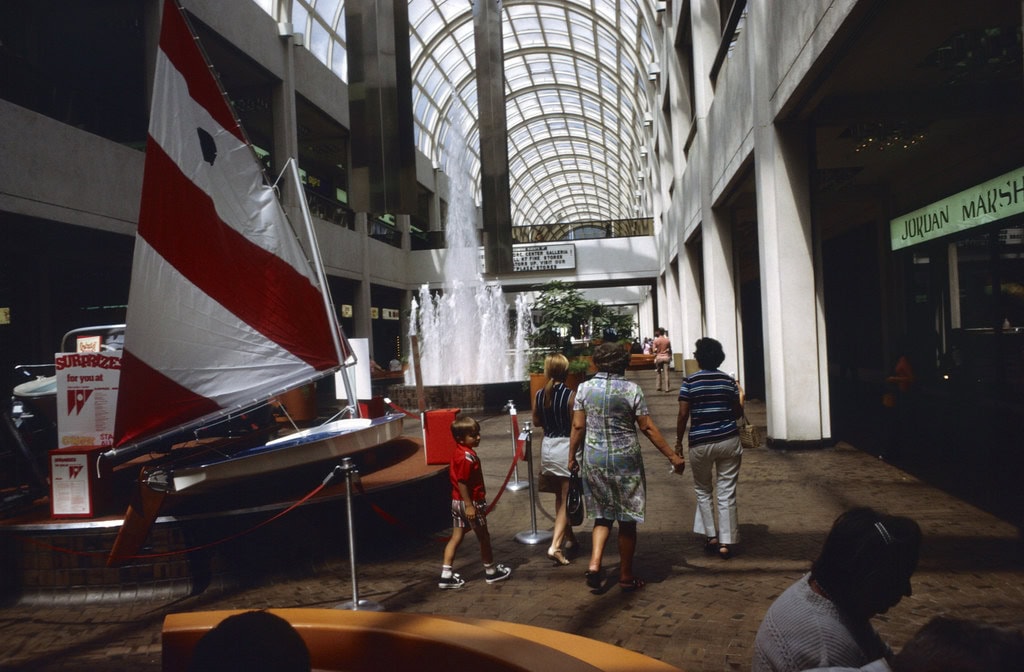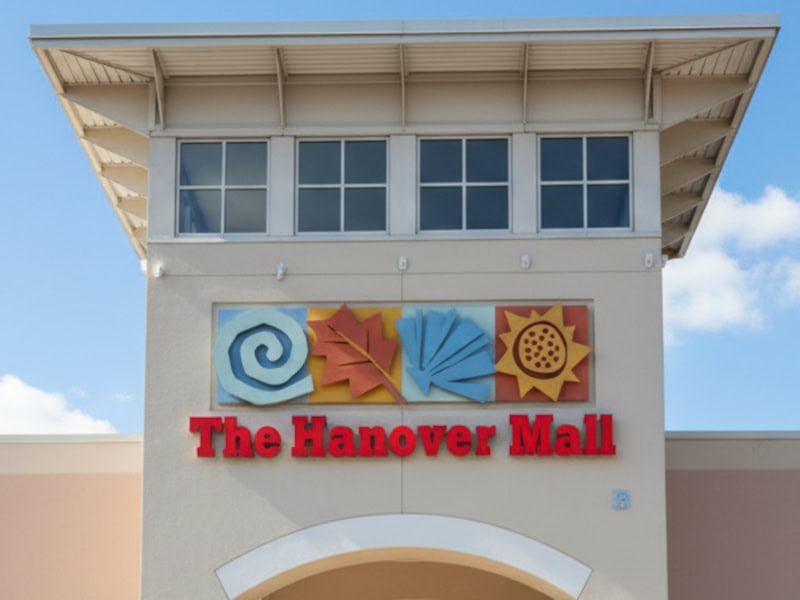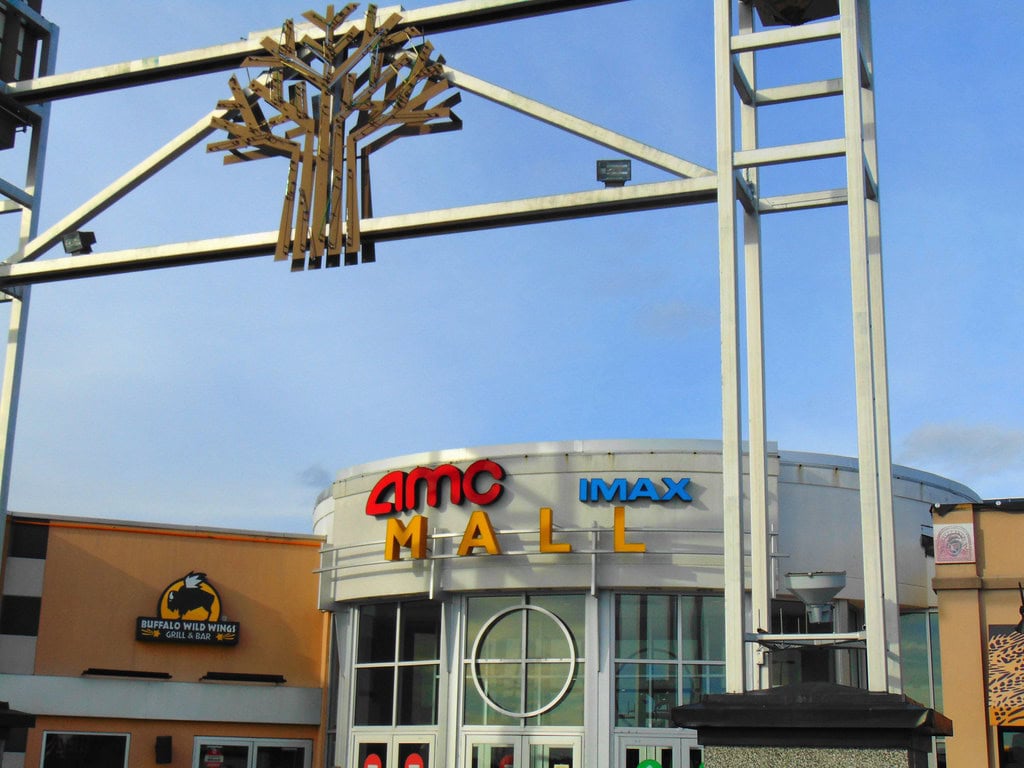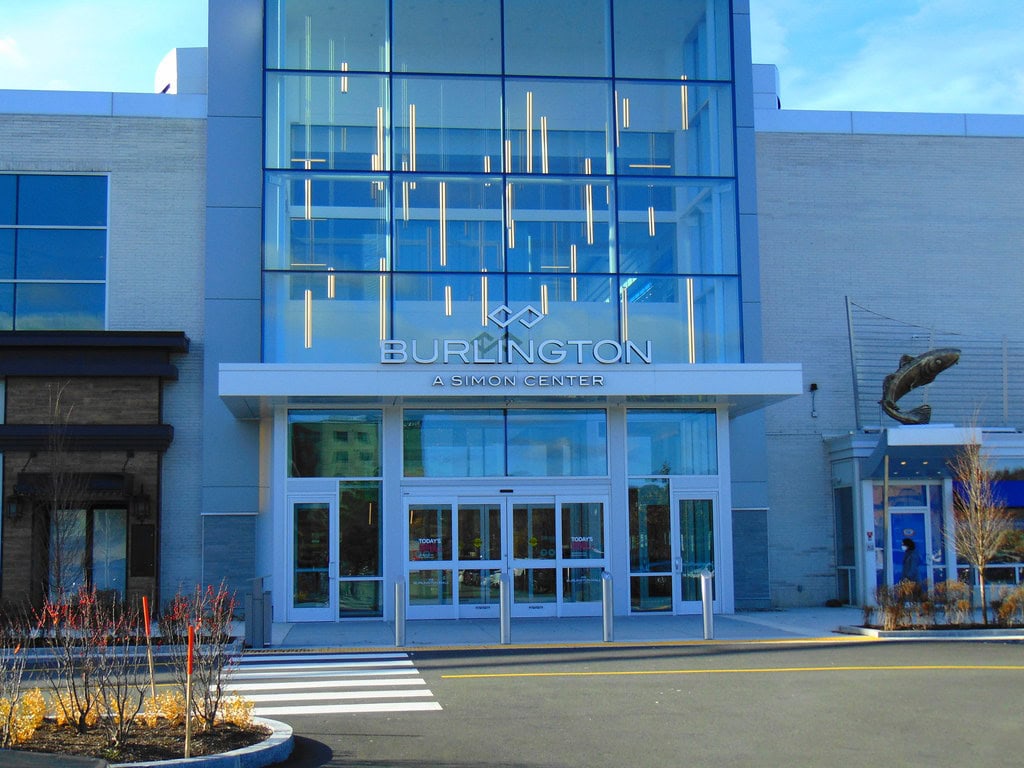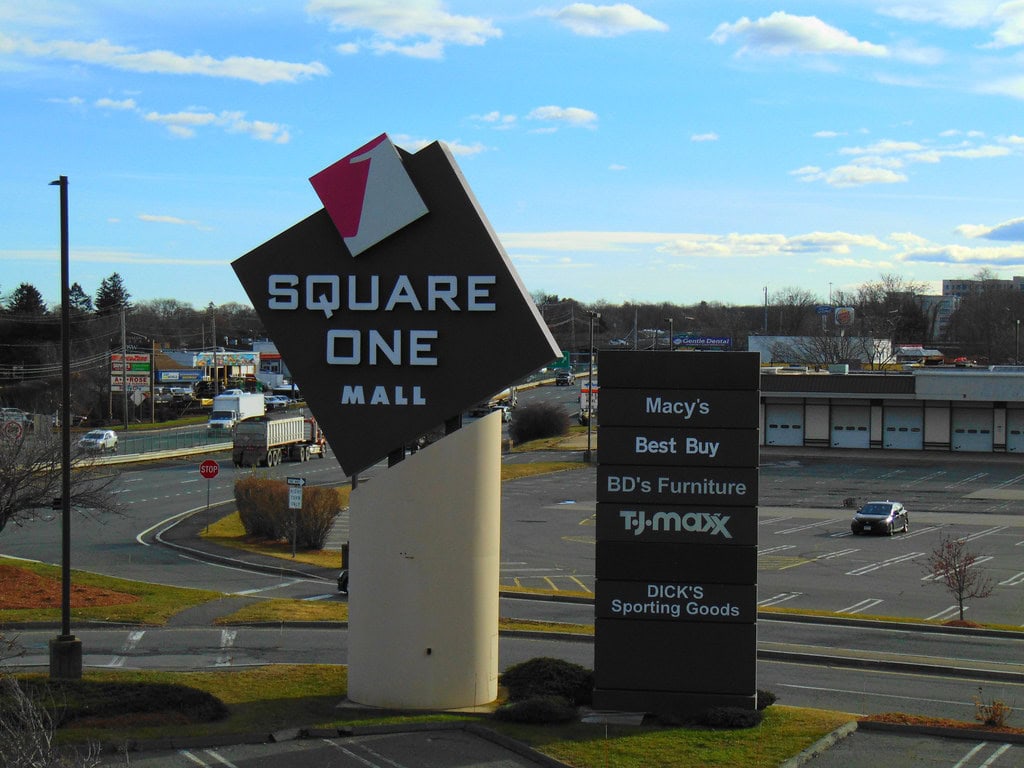The Mall With Brown Tile
In 1978, the Hampshire Mall opened in Hadley, Massachusetts, anchored by JCPenney, Kmart, and Steiger's.
It had burnt brown tile flooring, a six-screen movie theater, and long interior corridors wide enough to turn aimless walking into a daily ritual.
The tile has changed now, but it's still cool underfoot and worn smooth near what used to be Media Play. Interskate 91 holds on upstairs, and a few big-box tenants keep their square footage lit.
Among the things to do in Hadley, Massachusetts, this one still offers more space than noise and a layout that remembers when traffic moved in footsteps, not scrolls.
Retail Origins and the 1978 Launch
Hampshire Mall opened during a period when enclosed shopping centers had begun spreading across smaller towns in New England.
Developed by the Pyramid Companies, the structure was largely single-story, with a small upper level. Its anchor stores included JCPenney, Steiger's, and Kmart.
Each served a distinct commercial lane, giving the mall a full-service retail profile that was rare for the area at the time.
Located at 367 Russell Street, just off Route 9, the mall introduced a more consolidated alternative to Hadley's scattered commercial strip.
Shoppers could park once and find clothing, electronics, appliances, and a modest food court under one roof. The six-screen movie theater, added at launch, made the mall a regular weekend stop.
For a stretch of the early 1980s, the layout remained unchanged. Kmart brought the volume, Steiger's brought tradition, and JCPenney sat with national reach. That combination helped the mall stand out during the retail transitions of the era.
While Hadley was still known for farmland and hardware stores, Hampshire Mall planted the model for centralized retail that would shape development across the town line.

Lease Changes and Tenant Churn in the 1990s-2000s
Retail at Hampshire Mall stayed relatively stable through the late 1980s, but by the early 1990s, change came through anchor square footage.
The Steiger's department store was demolished in 1994, and in its place, Media Play opened on August 10, 1995. At the time, Media Play filled a multimedia retail niche, selling books, movies, games, and electronics in one footprint.
Kmart closed in 2002, a direct result of the company's national bankruptcy. That space didn't sit long. In 2003, construction crews rebuilt and expanded the footprint to house a full-size Target.
The arrival of Target brought in consistent daily shoppers, rebalancing foot traffic lost during Kmart's exit.
Around the same period, the original six-screen cinema (which had run from 1978 to 1999) was expanded and replaced by a new 12-screen Cinemark in 2000.
Dick's Sporting Goods opened in early 2005, taking over the old Eastern Mountain Sports space. Best Buy and Steve & Barry's moved into the former Media Play footprint around that same time.
Steve & Barry's declared bankruptcy in 2008 and shuttered its Hampshire Mall location by August of that year.
Land Use Battles and the Walmart Exception
In 2005, developers connected to Walmart began pushing for a 212,000-square-foot Supercenter near the southeastern edge of the Hampshire Mall parcel.
Hadley had a zoning bylaw that restricted new store sizes to a maximum of 75,000 square feet. That bylaw, crafted to control retail expansion and preserve smaller-scale land use, forced multiple rounds of negotiation.
After two years of site plan challenges and legal maneuvering, a subdivision exemption was approved on November 20, 2007.
This allowed the Supercenter plan to proceed despite the square footage cap. The exemption had an eight-year window, giving developers until late 2015 to secure full site approvals.
If the plan had moved ahead, the existing Walmart at Mountain Farms Mall likely would have shut down.

Experiential Leasing and Shift Toward Entertainment Use
As traditional retailers downsized or disappeared, Hampshire Mall leaned harder into experience-based tenants. Around the early 2000s, Interskate 91 North opened on the second floor, using space above the main level to create a roller rink.
LaserStorm followed, then rebranded as LaserBlast: Ancient Adventure. Together, they occupied a footprint that once might have gone to apparel or tech. Instead, they turned overhead square footage into motion, music, and dim neon lighting.
Steve & Barry's, which closed in 2008, left behind a large vacancy. Rather than plug in another store, management carved out space for a go-kart track, flipping retail frontage into active recreation.
The area that had once housed media displays and discount jeans became something else entirely. It wasn't about selling products anymore. It was about keeping bodies in the building.
Active Anchors and Non-Retail Lifelines
As traditional retail tenants thinned out, Hampshire Mall leaned increasingly on activity-based tenants to draw people through the doors.
These weren't old-line chain stores or seasonal pop-ups. They were built for participation, bookings, memberships, and return visits that didn't depend on inventory.
All In Adventures, formerly known as Mystery Room, runs multiple escape themes from a corner unit inside the mall.
Its rooms, designed around prisons, heists, or ancient traps, serve school groups, parties, and walk-ins. It trades in coordination and group logic, not merchandise.
This kind of tenant doesn't need mall-wide traffic. It needs a direct booking flow, and it gets it.
Fun Hub Action Park covers more space. With zip lines, trampolines, ninja courses, and climbing walls, it fills what used to be anchored by retail variety.
It's less about browsing and more about movement, high ceilings and reinforced walls instead of shelving or product displays.
Upstairs, Interskate91 has kept wheels on the floor for years. A full roller rink, birthday events, and themed nights run alongside LaserBlast, the fog-lit laser tag arena beside it.
Both venues carry over a kind of early-2000s mall identity, arcade energy, rental counters, and team play.
X-9 Games keeps tables filled with cards, dice, and sleeves. It's the kind of hobby store that thrives on weekly events and tournament calendars, offering something physical that e-commerce hasn't replaced.
Just down the corridor, Planet Fitness claims its square footage with cardio machines and weight racks. It doesn't depend on gift shoppers or fashion traffic. It just needs enough regulars to keep the fobs scanning.
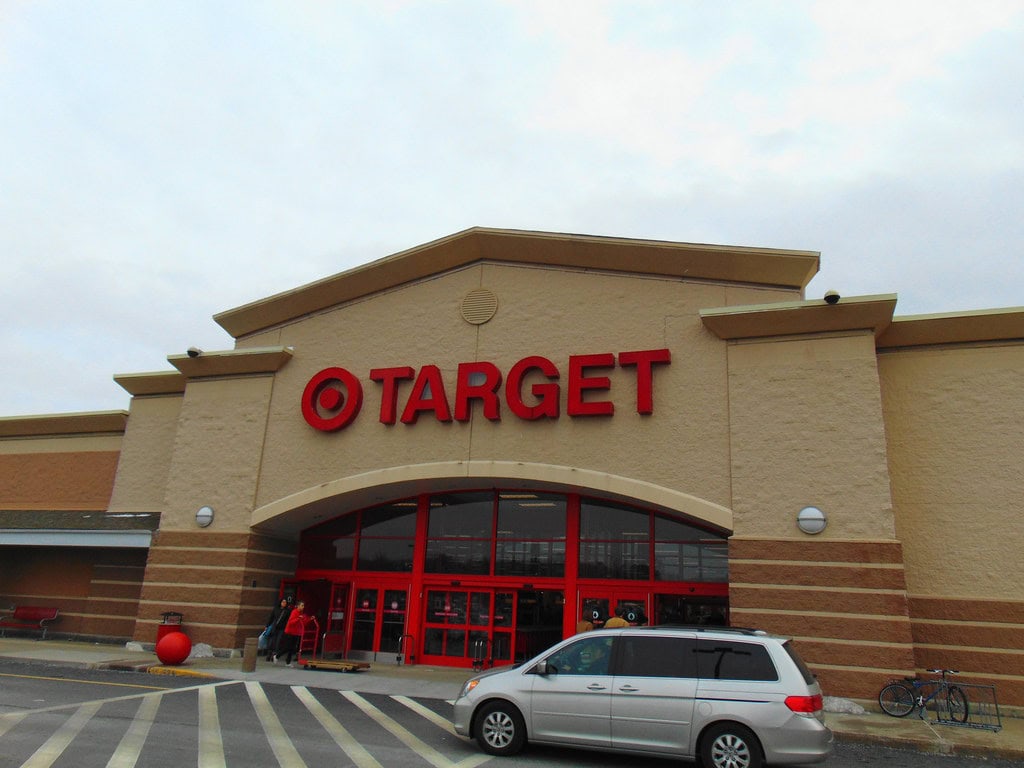
Foreclosure, Debt Transfer, and Tenant Landscape
On June 20, 2024, ownership of Hampshire Mall was transferred to Deutsche Bank Trust Co. Americas and Wells Fargo Commercial Mortgage Securities Inc.
The foreclosure took the mall out of private ownership and placed it under a financial trust. While Spinoso Real Estate Group stayed on as manager, the rules guiding money and decisions now came from elsewhere.
The transfer came amid long-term trends in retail distress. National vacancy patterns, rising operating costs, and variable lease performance made regional malls like Hampshire harder to finance.
Hadley's population base hadn't collapsed, but traditional inline tenants had. Foot traffic metrics had tilted toward big-box stores and single-visit destinations. The shared public space between them had thinned.
On February 26, 2025, Pinz closed without advance notice. No press release followed, and the entrance signage stayed up for several days.
The closure was confirmed by local reporting, but no statement came from mall management or the entertainment company itself.
Pinz once pulled steady crowds with its bowling lanes, arcade games, and bar. When it closed, the drop in sound and foot traffic was hard to miss.

Property Subdivision and Future Retail Footprint
In early 2025, developers filed plans to subdivide the Hampshire Mall parcel to allow for two standalone properties: one for Chase Bank and the other for Trader Joe's.
These buildings were technically part of the mall's original site but operated independently from its interior corridors.
Town planning board documents reviewed in March showed intent to legally separate the pads, making each address its commercial asset.
The move wasn't a surprise. National brands often prefer to hold or lease space without entanglement in broader mall operations.
By creating distinct lots, the developers increased financial flexibility. It also insulated these tenants from the mall's vacancy trends.
Trader Joe's, in particular, had a customer base that rarely crossed into the rest of the mall. Its checkouts ran steady, even as interior stores remained quiet.
🍀

